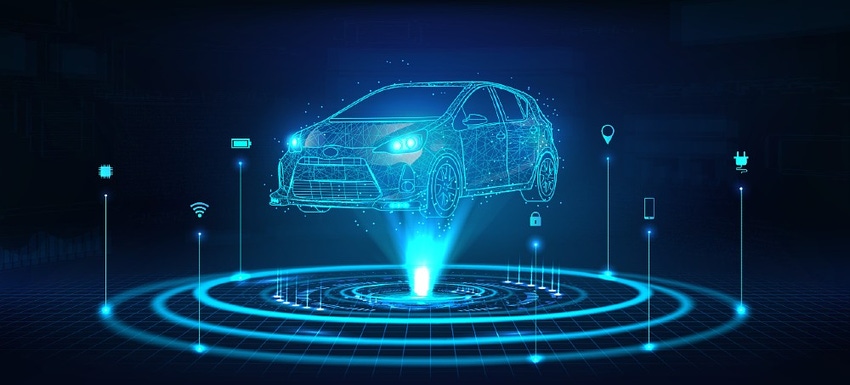Cisco’s Jeetu Patel Discusses Future of Webex, Emphasizes Inclusion, Holograms
The leader of Cisco’s security and collaboration business shares progress of the new Webex Suite.
March 25, 2022

Nearly a year since Cisco launched its revamped Webex Suite, the networking giant has doubled down on delivering enhancements to the newly integrated messaging, communications and virtual meeting solution.
Since its release last June, Cisco has rolled out a steady cadence of updates. During this week’s Enterprise Connect conference in Orlando, Cisco showcased Webex’s improved natural language processing capabilities, as well as extended compatibility of Webex RoomOS-based equipment with Zoom, Microsoft Teams and Google Meet. Cisco also demonstrated Webex Hologram, which it first previewed last fall.
As more people return to their offices this year, the latest enhancements to Webex – and more to come – will foster inclusivity in hybrid work environments. So says to Jeetu Patel, who oversees Cisco’s Security and Collaboration business as executive VP and general manager.
Patel is passionate about the AI and speech recognition capabilities that are enabling inclusion for those with disabilities. Mayada Abdelrahman, who leads product management at Cisco for speech AI/ML features in Webex, this week outlined the company’s newest speech recognition capabilities.
Helping People with Disabilities

Cisco’s Jeetu Patel
Patel said that 15% of the world’s population has some form of disability, and because of that, he said every decision made by the Webex team has accessibility in mind. That includes the contrast of colors, font typography and real-time closed captioning enabled by AI to address different accents.
And for all users, Webex meeting attendees no longer need to take notes, because of its ability to produces clean transcripts, according to Patel. During a recent interview with Channel Futures, Patel discussed the newest capabilities added to, or coming to Webex. What follows are excerpts of that interview, edited for clarity.
Channel Futures: How would you rate the accuracy of the transcripts Webex produces?
Jeetu Patel: Our accuracy rates tend to be near human accuracy, but of course that varies based on accent and clarity of speech. We developed this technology from Voicea, which we acquired in 2019. They had an engine that converts speech to text. We’ve spent a lot of time on not just the AI side of speech-to-text, but also with audio intelligence in general.
CF: How are you addressing multivendor compatibility?
JF: We now interoperate with our competitors. So, if you have a piece of hardware from Webex, we have devices that equip a lot of the world’s conference rooms and home offices. With a single button, not only can you join a Webex meeting, but you can also join a Microsoft Teams meeting, or a Zoom meeting, or a Google Meet meeting, right from the same interface. There’s interop on both sides, third-party software embedded into Webex, or our devices that can launch into our competitors’ software as well as going out and running a meeting.
CF: What are you doing to can gain some more share from Zoom and Microsoft Teams?
JP: We’re feeling pretty good about what we’ve actually seen happen in the market over the course of the past 12-18 months. We’ve seen continued growth in usage. And we’ve seen our NPS scores have gone up quite dramatically over the course of the past 12-15 months. In the short term, we’ve created a suite of applications that are all available as part of Webex. So, everything from calling messaging meetings, polling, events, whiteboarding, all those things are now available in a single suite. The beauty is you get some very sophisticated functionality in Webex, without having to pay extra for it and without having to jump from one app to the other.
CF: And longer term?
JP: As people return to the office, one of the things that they found is hybrid work is great, where some will work at home, some in the office and some people somewhere in the middle. But the challenge of hybrid work is there is invariably someone who feels left out. Suddenly, the person who’s remote starts feeling like a second-class participant. So what do we do about that? Just like we incorporated a lot of audio intelligence technologies with artificial intelligence, we’re now doing a lot of video intelligence technologies with AI and video intelligence.
CF: What does that entail?
JP: Well, if there are four people sitting in a room, rather than showing one room in a zoomed-out view with all four people, we will be able to zoom in so that you can each have your own individual video stream, even though you’re all four sitting together in the same room. That will completely change the experience.
CF: Does it require more than one camera to make that work?
JP: No. You typically have the camera that’s in your device. What it does is …
… it takes the picture, and then it processes that picture and segments it out. So you’re actually taking one high-resolution image and segmenting it and making individual video streams of each image and transmitting the individual video streams back.
CF: Where are you regarding the Webex Hologram capabilities you demonstrated last year?
JP: That completely changes the game, because not only are you able to see each other, but we were able to make sure that we can manipulate objects together collaboratively. Imagine if I’m building an automobile. If we’re designing the automobile together, we can have a three-dimensional model of the automobile that we can spin around. You can look the under the hood and what happens above the car, work different angles, and both of us are able to take and manipulate that object as we’re going through it. That is in beta. And we’re working on it so that [it’s ready] by the end of the year. We’re being very, very diligent on making sure that we really nail the experience for the user and the use cases.
CF: How is the beta program going?
JP: We’ve got a waiting list of customers. And we’ve filled out our beta slots. There are a lot of customers working with us. McLaren happens to be one of those customers where they’re working with us to create a holographic experience in the racecar pit. And there’s also what happens during training, and how do you go out and do repair vehicles and all those kind of use cases.
CF: How many of your channel partners are involved in some of these beta use cases?
JP: Our channel partners will be involved in anything that goes [generally available]. Right now, we’ve got enough customers that we’re dealing with to just make sure that we perfect the use case. But this is a game that channel partners will have a tremendous amount of opportunity to play in because augmented reality requires going up and setting up hardware.
CF: How does this work?
JP: This is photorealistic volumetric. When I’m looking at you, if I turn over this way, I don’t get a different angle of you; I get the same angle. In the volumetric image, what you’re doing is you’re taking a much broader view, an angle of the video and transmitting it over. It’s fully three-dimensional.
CF: It still requires glasses though, right?
JP: You have to wear the glasses in order to see the 3-D rendering. This is why I think it’s a three-to-five-year horizon for this to become mainstream. The glasses have to get to be the form factor of eyeglasses for it to really start to become something that you do on a daily basis for a large part of the meetings.
CF: What type of headsets are you using right now for this first release?
JP: We’re using [Microsoft] HoloLens and Magic Leap; we’ve actually got ties into both. And we will continue to work with any manufacturer that goes out and creates support for this.
CF: How about Oculus? Is that something you’re looking at, given the popularity of that headset?
JF: We’ve had great partnerships with Facebook as well, and with Meta; and in fact, we’ve done some integrations with them with their Facebook Portal as well. On the Oculus side, that’s more VR, whereas what we are doing in the first iteration is AR. Want to make sure that we do the augmented reality, but I would foresee us having the Meta Quest, which is what they’ve moved the name of Oculus to. We would love to work with all partners. Our goal there is to not pick and choose but make sure that we provide the most amount of choice available for our customers. And then the customers can pick whatever they want to pick.
Want to contact the author directly about this story? Have ideas for a follow-up article? Email Jeffrey Schwartz or connect with him on LinkedIn. |
About the Author(s)
You May Also Like


